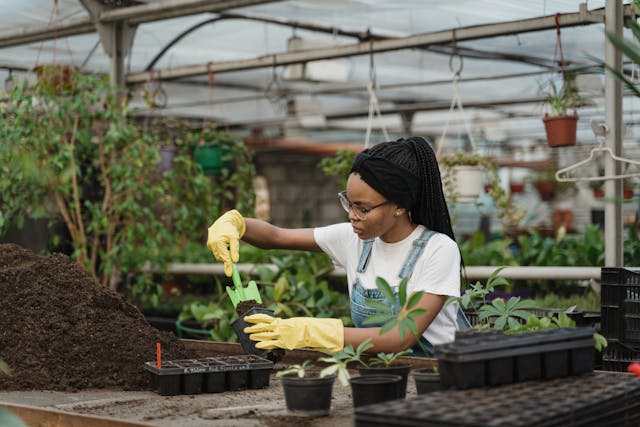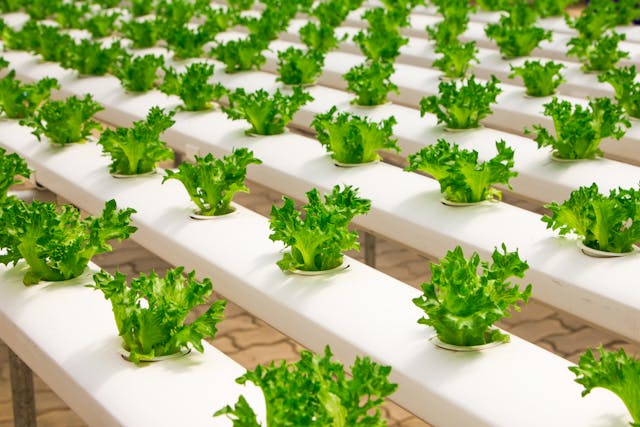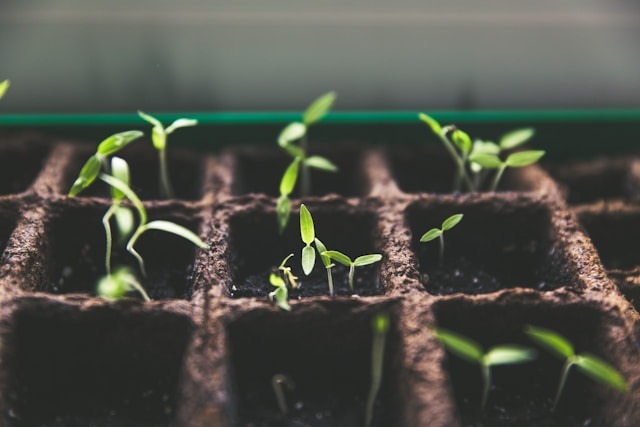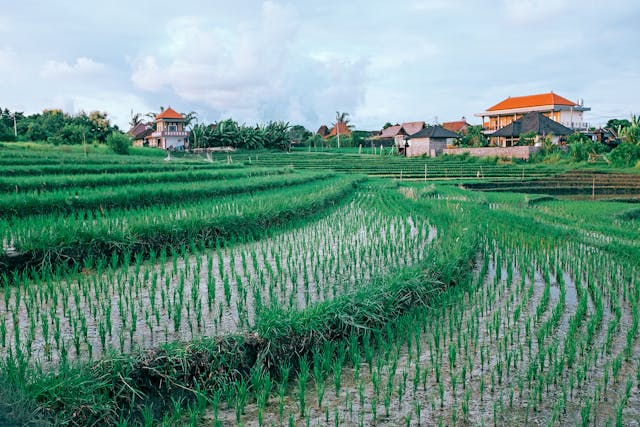Gardening in clay soil presents specific challenges and opportunities for gardeners. Clay soil is known for its density and capacity to retain water, causing difficulties with aeration and root growth. Many gardeners face issues with its compact nature, which can restrict root movement and lead to poor water drainage. This type of soil is composed of fine mineral particles that stick together, making it hard and often unwieldy when wet. Despite these challenges, clay soil is rich in nutrients and, with the right management techniques, can be very productive for a wide variety of plants.
Improving clay soil often involves incorporating organic matter to enhance its structure and drainage capabilities. The addition of compost, aged manure, or leaf mold increases the soil’s porosity, helps to break up the density of clay, and introduces beneficial microorganisms. Regular applications of organic matter can gradually transform the soil, making it more friable and easier for plant roots to navigate. Mulching is also essential, as it keeps the soil moist and temperature stable, while preventing the hard crust layer that can form on the surface of clay soil when it dries out.
When selecting plants for clay soil, it’s advantageous to choose species that are naturally adapted to heavier soils. Some trees, shrubs, and perennials thrive in clay conditions, leveraging its ability to hold onto moisture and nutrients that lighter soils might lack. Understanding the characteristics of clay soil and employing strategies to work with its distinct texture allows gardeners to cultivate a successful and vibrant garden.
Understanding Clay Soil
Clay soil is a type of soil known for its fine texture and its capacity to retain moisture. It’s composed predominantly of tiny mineral particles and provides a rich environment for plant nutrients, although it presents challenges in terms of drainage and aeration.
Characterizing Clay Soil
Clay soil is distinguished by its fine particles, typically less than 0.002 millimeters in diameter. Unlike sandier soils, clay feels sticky to the touch when wet and can be easily shaped into a ball. It retains moisture well, but this also means it has a slower drainage rate. Its dense structure benefits nutrient storage but hinders root growth and air circulation.
Types of Clay
There are several varieties of clay soil, each with unique characteristics:
- Kaolinite: This type of clay soil is common and has a low shrink-swell capacity, meaning it undergoes minimal volume changes with moisture content.
- Montmorillonite: This clay soil expands when wet and can impede drainage and root development.
- Illite: Usually found in marine environments, illite retains nutrients effectively and is less prone to shrinking and swelling.
Soil Testing for Clay
Performing a soil test provides vital information on the composition and quality of clay soil. A soil test can offer insights into:
- Texture: By measuring the proportions of sand, silt, and clay particles.
- Nutrient Levels: Revealing the concentration of essential nutrients and allowing for effective amendment.
A simple way to determine the presence of clay is the ribbon test, where one tries to form a ribbon with the moist soil. The longer the ribbon before it breaks, the higher the clay content. For a comprehensive soil analysis, a professional soil test is recommended.
Soil Preparation and Improvement
Soil preparation and improvement in clay gardens is critical to plant health and vigor. Key interventions include enhancing soil texture, integrating organic matter, and carefully managing soil pH and nutrients.
Improving Soil Texture
Clay soil is often compact, making it difficult for water and roots to penetrate. To improve the texture:
- Aerate the soil: This helps to break up the dense clay, allowing for better water infiltration and root growth.
- Add sand: Coarse builders’ sand can help to create larger soil particles and improve overall texture.
- Introduce organic matter: Materials such as compost and humus will further aid in loosening the soil structure.
Amending with Organic Matter
Organic matter is essential in transforming clay soil into a plant-friendly medium. For the most effective amendment:
- Compost: Incorporate well-rotted compost to introduce beneficial microorganisms and nutrients.
- Leaves and Manure: Blend in decomposed leaves and aged manure to increase the soil’s organic content and fertility.
- Mulch: Apply a layer of mulch on the soil surface to retain moisture and gradually improve the soil quality as it decays into humus.
Addressing Soil pH and Nutrients
The proper balance of pH and nutrients is vital for plant health:
- Test Soil pH: Aim for a pH that suits the plants you wish to grow, typically between 6.0 and 7.0 for most.
- Use Lime: If the soil is too acidic, applying lime can raise the pH.
- Organic Fertilizers: Add fertilizers like bone meal or fish emulsion to provide a slow-release source of nutrients without harming the delicate balance of clay soil microorganisms.
- Loam Creation: Over time, the addition of organic matter can turn clay into rich loam, teeming with life and conducive to vigorous plant growth.
Choosing the Right Plants
Selecting appropriate plant varieties that thrive in clay soil will ensure a successful and vibrant garden. It is critical to choose plants that can handle the dense and often poorly drained conditions of clay soil.
Best Vegetables for Clay Soil
Vegetables that have a tolerance for the heavy, wet nature of clay soil can still prosper with the right care. Root vegetables may struggle, but leafy greens like spinach and chard perform well. Additionally, cruciferous vegetables such as broccoli and Brussels sprouts are suitable for clay conditions.
- Leafy Greens: Spinach, Chard
- Cruciferous Vegetables: Broccoli, Brussels Sprouts
Flowers and Shrubs That Thrive in Clay
Several hearty perennial flowers and shrubs are well-suited for clay soils, as they can withstand the challenging drainage. Daylilies and hostas are not only tolerant of heavy soils but also add lush foliage and vibrant colors. Shrubby varieties such as the sturdy viburnum and resilient hydrangeas offer added texture and interest to clay soil gardens. Popular flowering choices like rudbeckia and clematis also adapt well to clay conditions.
- Perennial Flowers: Daylily, Hosta, Rudbeckia, Clematis
- Shrubs: Viburnum, Hydrangeas
Trees Suitable for Clay Conditions
Clay soil poses a unique set of challenges for tree growth, so choosing the right species is paramount. Trees with robust root systems that can handle wetter soil conditions are recommended. Some examples include certain varieties of maple, elm, and willow, which are known for their adaptability to less-than-ideal soil structures.
- Trees: Maple, Elm, Willow
Cultivation Techniques
In tackling clay soil, strategic cultivation techniques are essential for improving soil structure and fertility. These methods enhance the soil without disrupting its natural state and help ensure successful plant growth.
No-Till Gardening
No-till gardening is a method that involves minimal soil disturbance. This technique preserves soil structure, reduces erosion, and fosters a healthy ecosystem within the soil. For clay soils, a no-till approach allows the natural soil aggregation to improve over time, as earthworms and microorganisms remain undisturbed. When implementing no-till gardening in clay, one can use a broadfork to gently aerate the soil without inversion. Additionally, incorporating organic matter such as compost can enhance soil conditions, as it increases porosity and nutrient levels.
- Advantages of No-Till Gardening in Clay Soil:
- Enhances natural soil structure
- Promotes water infiltration
- Encourages a healthy, biodiverse ecosystem
Mulching and Crop Covers
Mulching offers a barrier on the soil surface that can protect against the compaction that clay is prone to. An effective mulch can be composed of organic materials like straw, wood chips, or shredded leaves. These materials gradually break down, contributing to soil fertility and enhancing its overall texture.
- Benefits of Mulching:
- Reduces soil compaction
- Helps retain soil moisture
- Adds organic matter as it decomposes
Plant cover crops, another technique for clay soil, can be particularly beneficial when used in rotation with seasonal crops. Cover crops such as legumes can fix nitrogen in the soil, while deep-rooted species can naturally aerate the soil and improve its structure.
- Types of Cover Crops Suitable for Clay Soil:
- Legumes (e.g., clover, vetch)
- Grasses (e.g., rye)
- Brassicas (e.g., radishes, mustards)
Implementing mulching alongside cover cropping can also regulate soil temperature, add nutrients, and suppress weeds, making it a dual strategy for successful clay soil cultivation.
Managing Water and Drainage
Effective management of water and drainage in gardening involves addressing the unique challenges posed by heavy clay soils. These strategies are crucial for preventing soil compaction and ensuring the soil structure allows adequate water flow and root growth.
Improving Drainage
Amending Soil Structure: Amending heavy clay soil is vital to improve its drainage capacity. One can incorporate organic materials like compost or well-aged manure which enhance soil structure by increasing porosity. Similarly, adding gypsum helps break up compacted clay soil, thus facilitating better water movement.
Physical Alterations: Contouring land through raised beds or terraces helps to manage water flow. French drains or other similar structures divert excess water away from areas where it’s likely to cause compaction and pooling.
Example of a French Drain:
| Layer | Material |
|---|---|
| Top | Gravel or river rock |
| Middle | Perforated drain pipe |
| Bottom | Coarse sand or landscape fabric |
Irrigation Strategies
Slow Watering Techniques: Due to the slow water penetration rate in clay soils (0.01 to 0.5 inches per hour), it’s recommended to water slowly over extended periods. This method mitigates runoff and provides the water deep within the soil, where plant roots can access it. Drip irrigation or soaker hoses are ideal for this purpose.
Timing and Frequency: Gardeners should adjust their watering schedule to suit the needs of plants grown in heavy clay soil. Periods of rain should be accounted for, as clay holds moisture for longer. Therefore, soils should be allowed to dry out somewhat between watering sessions.
By following these methods, one not only manages heavy clay soil’s potential for wetness and compaction but also caters to the needs of plants that thrive in such conditions.
Maintaining Soil Health
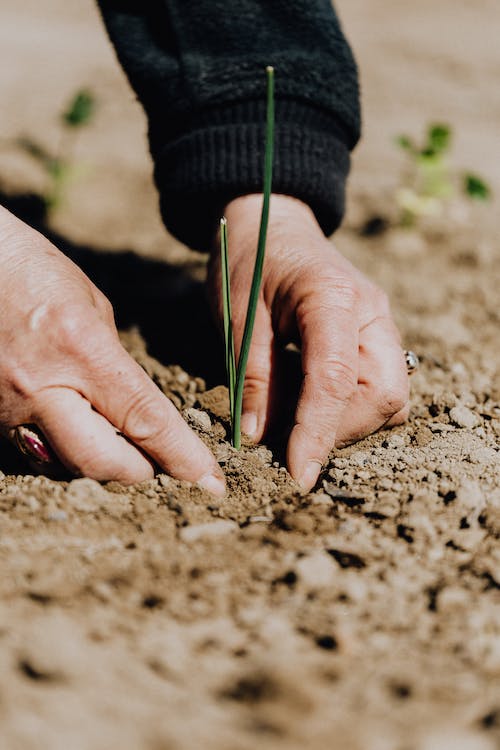
Regular Amendments
To improve soil texture and counteract nutrient deficiencies, gardeners should apply organic matter twice a year, typically in spring and fall. Appropriate amendments include:
- Composted manure: Supplies nutrients and improves drainage.
- Peat moss: Increases aeration, though it should be used conservatively due to its acidic nature and sustainability concerns.
- Leaf mold: Boosts the soil structure and retains moisture.
A proper amendment schedule helps maintain soil consistency and nutrient levels, which is vital for healthy plant growth.
Balancing Soil Life
Clay soil benefits greatly from a diverse soil ecosystem:
- Worms: These natural aerators break down organic matter and excrete nutrient-rich castings, enhancing soil fertility.
- Microorganisms: Their activity decomposes organic material, releasing essential minerals back into the soil.
A balanced soil life ensures continuous nutrient recycling and availability, making for a resilient garden. Regular additions of organic material serve as food for these organisms and should be incorporated into the soil regularly to keep them thriving.
Troubleshooting Common Problems

Gardeners often encounter two primary issues when working with clay soil: soil compaction and inhibited root growth. By addressing these challenges, they can significantly improve plant health and yield.
Dealing with Compacted Soil
Heavy clay soil is particularly prone to compaction, which reduces the pore space necessary for air and water to move through the soil. This can create a tough environment for plant roots and microorganisms that are essential for soil health. To mitigate compaction:
- Aerate the soil: Use a fork or core aerator to introduce air spaces, improving drainage and root penetration.
- Amend with organic matter: Applying compost or well-rotted manure maintains loose soil structure.
- Avoid working wet soil: Tilling or walking on wet clay can increase compaction.
Overcoming Poor Root Growth
Clay soil’s dense nature poses challenges for root growth, which is essential for plant stability and nutrient uptake. To encourage healthy roots in clay soil:
- Plant suitable species: Some plants, like willows and certain ornamental grasses, naturally thrive in clay.
- Raise your garden beds: Elevated beds prevent waterlogging and make space for roots to expand.
- Incorporate coarse materials: Grit or coarse sand can help to create larger pores within the soil, offering roots more room to grow.
By taking these targeted actions, gardeners can manage clay soil’s inherent issues, creating more favorable conditions for their plants to flourish.
Advanced Tips for Seasoned Gardeners

Layering with Raised Beds
Raised beds redefine the gardening experience on heavy clay soils by introducing the opportunity for better drainage and root development. Gardeners should layer rich topsoil and organic matter in constructed raised beds. By adding a mixture of clay loam and peat moss, along with other organic materials like compost, seasoned gardeners can significantly improve drainage and structure within the beds. Adjustments made to the composition over time fine-tune the root environment for optimal plant health.
Enhancing Soil Structure Over Time
Improving the structure of clay soil is a commitment to consistent cultivation and amendment incorporation. Aeration is key; regular aeration practices should be maintained, including:
- Forking: Manually breaking up the soil to introduce air spaces.
- Core Aeration: Removing small cores of soil to alleviate compaction.
To further enhance soil improvement, seasoned gardeners should:
- Ensure periodic mixing in of organic matter:
- Aged manure
- Composted green waste
- Shredded leaves
- Consider the addition of gypsum, particularly if soil sodicity is an issue, as it helps to improve tilth and drainage.
With an understanding of the entities and methodical application of these advanced techniques, seasoned gardeners can transform their challenging clay medium into fertile ground conducive to thriving gardens.



